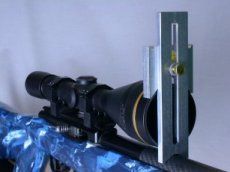Hey Guys,
I got some wheeler levels for leveling my optic with my action and, well, it is a bit odd. I thought it was pretty good before and now when I have a level on the action rails and one on top of the top turret and they match up, the reticle looks totally cockeyed when you look through the optic. I am curious how you guys get your optic level so I can give that a shot. My rifle is a rem 700 SPS-varmint 308 with a NF NXS 3.5-15X50 F1.
thanks
chuck
I got some wheeler levels for leveling my optic with my action and, well, it is a bit odd. I thought it was pretty good before and now when I have a level on the action rails and one on top of the top turret and they match up, the reticle looks totally cockeyed when you look through the optic. I am curious how you guys get your optic level so I can give that a shot. My rifle is a rem 700 SPS-varmint 308 with a NF NXS 3.5-15X50 F1.
thanks
chuck



